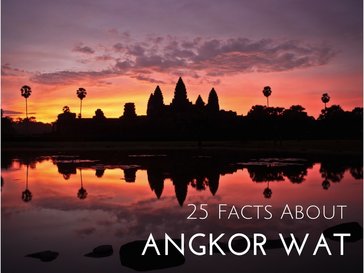
2. Most of this complex is remarkably well kept even today, although plenty of ruins and buried structures remain. New temples are still being unearthed discovered every year!
3. The temple was constructed in the 12th century (1113 to 1150) by the Khmer King Suryavarman II.
4. Angkor Wat was originally a Hindu temple, although it was later converted into a Buddhist shrine in the 14th century, which it remains today.
5. It was designated a UNESCO World Heritage Site in 1992, however, it didn't make the new list of Seven Wonders of the World.
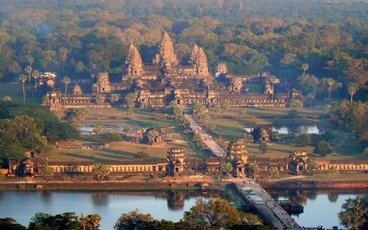
7. The main Angkor Wat temple was designed as an accurate replica of the universe, as they knew and saw it, an “earthly model of the cosmic world.”
8. The central tower, the temple’s highest point, symbolizes Mount Meru, a holy mythical mountain that stands at the center of the universe in the Hindu pantheon, home to many of their Gods and deities. The maze of enclosure walls surrounding the central tower symbolize obstacles that human beings must bypass on their path of enlightenment, and the smaller towers represent other Hindu Gods.
9. Even the extraordinary moat around Angkor Wat had meaning, with the water representing the Cosmic Sea, from which all creative energy and life springs, according to the Hindu religion.
10. In Khmer (the Cambodian language), Angkor Wat means “City of Temples” or “City Temple.” In fact, the temple was built within Angkor, then the capital of the Khmer Empire.
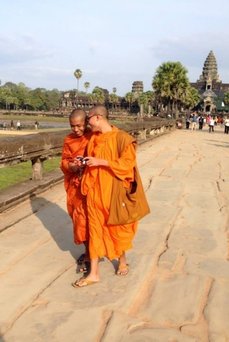
12. Building Angkor Wat was such a massive undertaking, that it’s still not fully known how they managed the task with basic tools and no machinery. But we do know that it took 300,000 laborers (with the help of 6,000 elephants) 37 years to construct.
13. Although nothing remains of it today, a wall once enclosed the entire temple, city, and royal palace at Angkor Wat, covering 203 acres (820,000 square meters).
14. It took 5 million tons of sandstone used to build Angkor Wat, which had to transported from a quarry in the Kulen Hills more than 25 miles away using an intricate system of canals. Just to dig out the enormous moat, more than 1.5 million cubic meters of sand and salt had to be removed and carried away.
15. Interestingly, the bricks that make up Angkor Way were bonded together with a vegetable compound – not the traditional mortar – which allows for a much tighter fit.
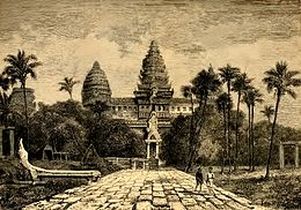
18. Before the 1800s, few Westerners had witnessed the splendor of Angkor Wat. But the first Western eyes to have witnessed the monument belonged to Antonio da Madalena, a Portuguese monk who visited in 1586.
19. But it was French explorer Henri Mouhot who brought accounts of Angkor Wat to the Western world by publishing details of his visit in his mid-19th century book, Travels in Siam, Cambodia, Laos, and Annam.
20. Angkor Wat is also a huge draw for tourism, with approximately 2.1 million foreigners coming to Cambodia to see the temples each year, accounting for about half of Cambodia’s total tourism.
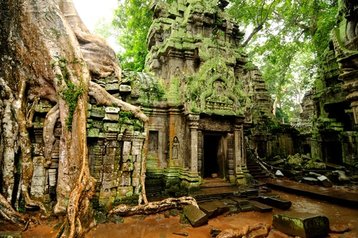
22. Sokimex is so powerful (and corrupt) in Cambodia that only about 28% of the profits from Angkor Wat even go back to the temples, yet alone the nation’s people, with the majority of funds to restore and maintain the temples coming from foreign aid.
23. Part of the movie Lara Croft, Tomb Raider with Angelina Jolie was shot in the smaller temple of Ta Prohm within the Angkor complex, recognizable by the vines and tree that overtake the temple walls. In fact, Paramount Pictures rented the temple for $10,000 a day for seven days to film there.
24. Jolie became enamored with Cambodia and its people, eventually adopting children from that country, deeply involved with charities there, and directing a movie, First They Killed My Father, about the Cambodian genocide.
25. But Jolie wasn’t the first famous American woman to take a shine to Angkor Wat. Jacqueline Kennedy actually took a special trip just to see Angkor Wat during the Vietnam War, putting herself at risk to fulfill her lifelong dream.
***
Norm :-)
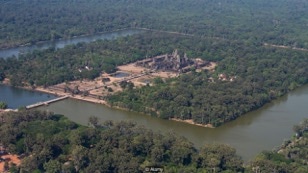


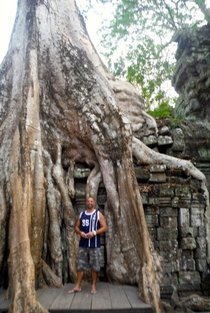
 RSS Feed
RSS Feed